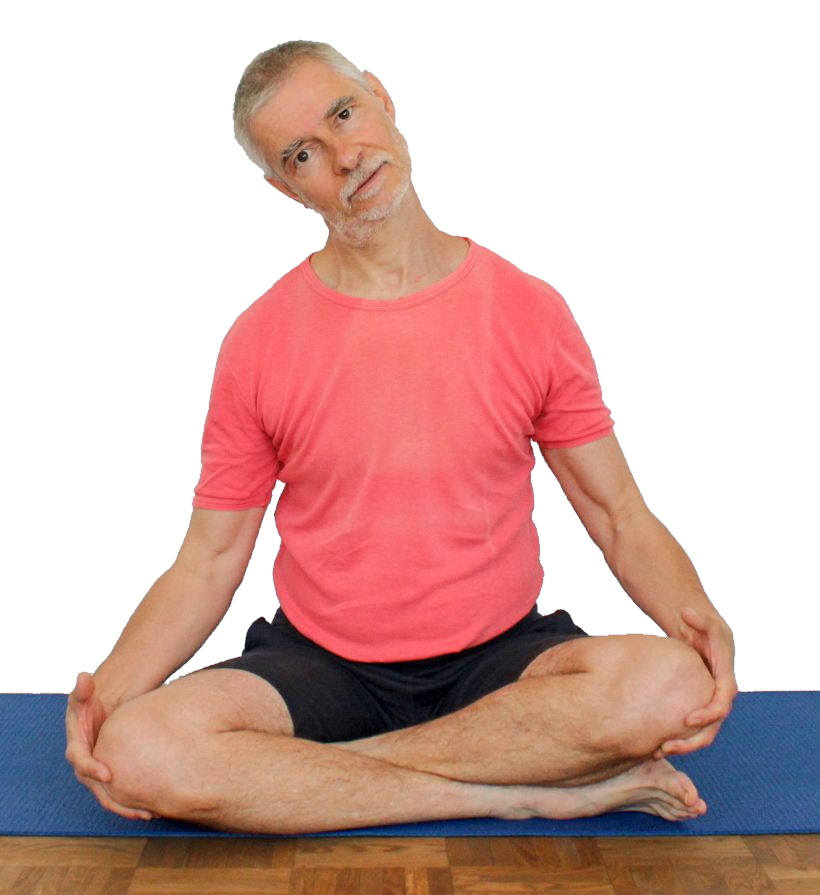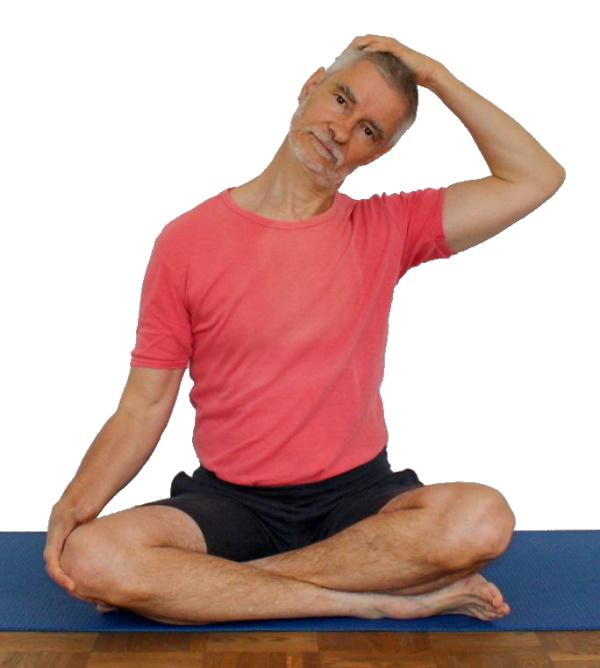yogabook / functional exercises / head tilt
Contents
„Head tilt“

 instructions and details with working links as PDF for download/print
instructions and details with working links as PDF for download/print
Feedback: We’d love to hear what you think about this description, give us feedback at:
postmeister@yogabook.org
last update: 30.12.2018
Name:
Trivial name: head tilt
Level: A
- Classification: A
- Contraindication
- Effects of
- Preparation
- follow-up
- derived asanas
- similar asanas
- diagnostics
- Instruction
- details
- Variants
Classification
classic: functional exercise
psychomental:
physiological: stretching (neck)
Contraindication
This pose is contraindicated for cervical disc disorders.
Effects
- (291) Stretching of the trapezius and lateral flexors of the cervical spine
Preparation
Follow-up
Derived asanas:
Similar asanas:
Diagnostics (No.)
Variants:
Instructions
- Sit comfortably and upright, e.g. cross-legged. Stretch your spine and head vertically upwards.
- Tilt your head to the right for two seconds without using the muscles performing the exercise too forcefully, so as not to cause a cramp.
- Move your head back to the centre position and then tilt it to the left in the same way.
- Move the head back to the centre position.
- Continue tilting the head sideways, alternating sides and increasing the duration by one to two seconds with each pass.
Details
- Be careful not to mix the head sideways tilt (lateralflexion) with turning to the same side. In addition to external control by a supporter, a mirror can be very helpful. The head does not move forwards or backwards out of its frontal plane, so the cervical spine does not flex, stretch or rotate.
- The executing muscles, which actively tilt the head to the side, must not be used too much, otherwise there is a risk of cramp, as with all muscles that are required to contract close to their maximum concentric contraction. This risk would be all the greater here if the muscles are already tense or cramped. Instead, in order to increase the stretching effect, the arm on the same side can be used to press carefully with the hand (large lever arm!) from the contralateral side against the head laterally. The supporting arm must of course be changed to switch sides.
- Keep the shoulder blades down. Depending on which muscles are tense or tense, this is essential for the effect. To keep the shoulder blades reasonably securely down (in depression), both hands can be pressed under the respective leg with a little pressure from below.
- In cases of significantly restricted flexibility due to tension/cramp/shortening, side discrepancies are often recognisable. Sometimes the head can be tilted just 10° – 15° to the side on one side, but at least 30° – 40° should be achieved on both sides.
Variants
Hand pulls on the head

Instructions
- Take the hand on the same side (as the side to which the head is moving) and carefully pull the head from above-outwards on the opposite side of the head (anterior superior parietal bone or „parietal bone“) in the direction of the side being moved.
Details
- On the side of the pulling hand, it is of course all the more important to ensure that the shoulder blade does not come up.
